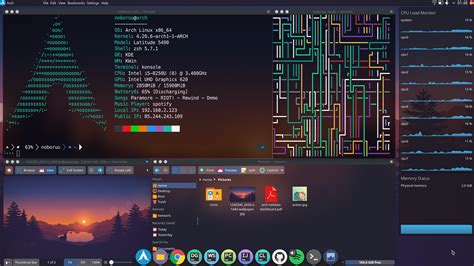In the ever-evolving landscape of desktop environments, few iterations elicit such a profound sense of nostalgia and loyalty as KDE 3. Fondly remembered by many tech enthusiasts, KDE 3’s simplicity, efficiency, and reliability still resonate today. While newer versions like KDE 4 and Plasma 5 have made impressive strides in terms of user interface and functionality, they have also brought mixed reactions from long-time users. In this article, let’s explore the enduring legacy of KDE 3, its transformation, and the community’s strong attachment to this venerable desktop environment.
KDE 3 was highly cherished for its balance between being user-friendly and configurable, making it accessible to both newbies and power users. As one user reminisced, KDE 3 was ‘infinitely configurable for power users’ while remaining ‘accessible enough for newbies.’ This combination of flexibility and functionality made KDE 3 a favorite ‘desktop of freedom.’ The duality of being configurable yet approachable is a standard that many current desktop environments strive to achieve but often miss the mark. KDE 3 managed to deliver an intuitive experience without overwhelming the user with excessive customization options.
An integral part of KDE 3’s appeal was its flagship web browser and file manager, Konqueror. Unlike modern browsers which often compete in terms of resource-hungriness, Konqueror was lauded for its lightweight and multifunctional nature. Users could easily switch between browsing the web and managing files, a feature that simplified their workflow. As one passionate user pointed out, ‘Konqueror was great… you could use it as both a file manager and a browser, and that you could switch browser engines.’ This kind of versatile software design is seldom seen today, where single-purpose applications are more common.
However, the introduction of KDE 4 marked a tumultuous period for many loyal KDE users. Transitioning from KDE 3 to KDE 4 felt like a drastic shift not just in aesthetics but in user experience and performance. Many felt that KDE 4 was ‘completely unusable for the first … 4 releases,’ marking it as an unstable and resource-intensive iteration that strayed from its predecessor’s simplicity. Users were particularly irked by the new ‘folder view’ widget, which aimed to replace the conventional desktop icons but often resulted in instability and a cluttered desktop, leading some to abandon KDE altogether.
The community’s grievances with KDE 4 resonated across numerous forums and discussions. One poignant reflection highlighted how KDE 4 was seen as an ‘arrogant move’ that led to the decline in both user satisfaction and developer accountability. Another user recounted working with KDE 4 and dealing with issues such as icons ‘moving around a few pixels on every update,’ a problem that shattered focus and productivity. Such frequent complaints underscore the disconnect between developers’ vision and the end-users’ experience during that era, a misalignment that ultimately tarnished KDE 4’s reputation.
Despite these challenges, KDE has evolved, and Plasma 5 and the forthcoming Plasma 6 have shown significant improvements. These new versions aim to blend the speed and efficiency reminiscent of KDE 3 with modern aesthetics and features. However, the sentiment remains that no matter how advanced the innovations, there will always be a place for KDE 3 in the hearts of many. One enthusiastic user noted Plasma 5’s lightweight performance even on older hardware, indicating a shift back towards user-centric efficiency. While nostalgia plays a significant role in this continued affection, it’s worth highlighting that the enduring relevance of KDE 3 is also a testament to the timeless design principles it embodied.


Leave a Reply